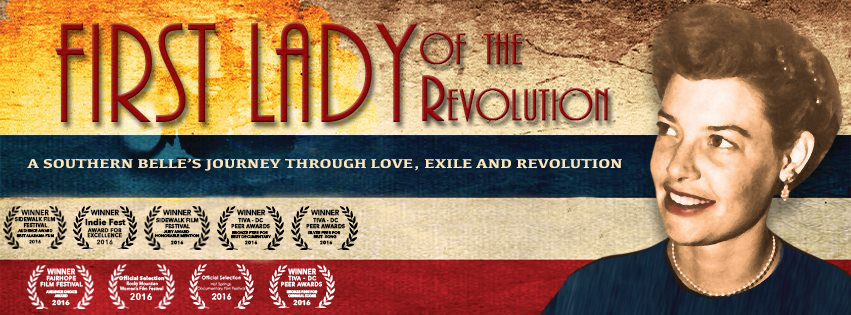Listening to the First Lady of the Revolution

On a sunny day in March, strange sounds seeped out of the Children’s Museum in San Jose, Costa Rica. About a dozen young men and women were running around Museum’s exhibits, leaping through the jungle gym, swinging on the bars, and screaming at the top of their lungs about Rafael Calderon and Don Pepe. People at the Museum turned their heads, surprised and a bit confused. Here in the US, the equivalent would be a group of people running through the Smithsonian, screaming about Generals Grant and Lee. You can bet the Smithsonian security would be been all over them in a heartbeat. In San Jose, no security came to stop the invasion of the Children’s Museum. Good thing, too, because we were recording foley for First Lady of the Revolution!
Sound design is one of the most underrated and forgotten elements of filmmaking, but it is truly one of the most important. These are the sounds of people walking in the street, a horn going off, chatter on the subway, the usual noises that we all hear every day as we go about our daily lives. Or the sounds I am hearing right now as I write this – the sound of my fingers smashing the letters of the keyboard, the wind blowing outside my window, the creak of the floorboards as my wife walks in the hallway behind me. Sounds I don’t even think about because they are just a part of my life. What most audiences don’t recognize is these noises in movies – sounds that we take for granted – don’t just exist; they are meticulously crafted and carefully selected. Every single sound is picked for a very specific reason. If you just played a scene as it was originally recorded on set, without the benefit of any added sound design, it would sound odd, a bit hollow, and certainly not real. The irony of sound design is that in order to make it sound realistic, you need to create it.
So let’s get back to those actors and actresses running around the Children’s Museum. The film’s director Andrea Kalin and our fabulous sound design team Daniel Alarcon and Carlos Aguilar descended on the Museum to record foley for our documentary – we needed running and jumping for the scenes of soldiers scrambling through the jungle. We needed authentic crowds screaming at political rallies (for that, we surely could have used standard “crowd noises” from a sound library, but that would have sounded inauthentic. That’s why we had the actors screaming about Calderon and Pepe). All of this work was essential to making the scene more real and for creating a mood – in this case, one of increasing tension as a political crisis came to a head.
Check out this video below – this is the same scene in the film, one without sound design and one with that track included. The former is…interesting – Henrietta Boggs is narrating an intriguing story and it’s engaging enough, I suppose. But listen to it again with the crowd screaming, and I dare you to say the scene is not more effective, with higher stakes and greater tension. That is the effectiveness of sound design.
Sound design is actually a lot more creative than you would think, as well. A good designer is always adding intricate little details. Most viewers will never notice them, but they still have a subconscious impact and help evoke a certain emotion. My favorite sound design moment in the film is during the training of Don Pepe’s army at his farm in La Lucha sin Fin. These guys are a hot mess. They don’t know how to fire a gun. They can’t follow orders. And they can’t even march in sequence. Check out the scene below and listen carefully as the marchers change direction.
At first listen, it might just sound like the soldiers are turning from right to left. But listen again – what you actually hear is some soldiers turning, and others not turning. You hear a crash of arms as people jumble together and run into each other, which subconsciously reinforces the fact that these guys really don’t know what they are doing. That sound effect alone elevates that moment from being amusing to a scene that actually gets one of the biggest laughs in the movie theater. I give Daniel and Carlos the credit for that!
So next time you watch a movie, listen more carefully. Once you realize how much sound there is in a film, it will be impossible not to be impressed with the painstakingly detailed work that must go into it. It’s tough work, and never gets the recognition it deserves! I hope this little back story helps open your eyes – and your ears – to how important sound design really is.
And if you want to watch First Lady of the Revolution, you can! The film is now available on demand and DVD. Click here to learn more!
Comments